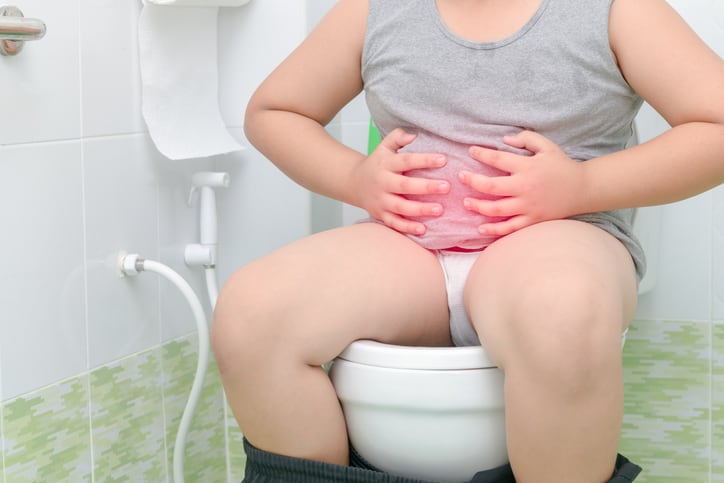Currently, oral rehydration solution is the main treatment approach for diarrhoea, however it cannot halt the progression of diarrhoea, nor address microflora imbalance, pathogen clearance, and environmental enteric dysfunction, which may be addressed by probiotics.
While probiotics have been known to treat acute diarrhoea in children, it is unclear which specific probiotic is the most effective. “Traditional meta-analysis only focused on one probiotic and failed to find the most effective probiotic. Besides, the effectiveness of multi-strain probiotics is yet to be evaluated,” said researchers from China and Australia in Nutrients.
So, they conducted a meta-analysis on 84 RCTs across the world, comprising 13,443 children with acute diarrhoea. It compared the effectiveness of single-strain and multi-strain probiotics to determine the most effective probiotic.
Study method
Collecting studies from online database, the 84 RCTs involved a probiotic intervention for treating acute diarrhoea in children 18 years old and below. Although, most of the children were under age five.
Acute diarrhoea is a major cause of morbidity and mortality in children under five. Diarrhoea could result in dehydration and electrolyte disturbances in children, and long-term consequences include growth stunting, malnutrition, and impaired cognitive development.
Of the 84 included studies, 23 were studied in high-income economies, 34 were in lower-middle economies, and 25 were in upper-middle economies, and 2 were multicenter studies.
Children were randomly assigned to receive probiotics, placebo, or no treatment.
The primary outcomes were diarrhoea duration and risk of diarrhoea lasting ≥2 days, while the secondary outcomes were mean stool frequency and duration of hospitalisation.
Probiotic interventions could be divided into single-strain and multi-strain probiotics.
The single-strain probiotics included Saccharomyces (S.) boulardii, Lactobacillus rhamnosus GG (LGG), Lactobacillus (L.) reuteri, Bacillus clausii, L. acidophilus, Bifidobacterium (B.) lactis, L. sporogenes, L. plantarum, Escherichia coli nissle 1917 (ECN 1917), L. paracasei, and Enterococcus (E.) faecium.
Multiple-strain probiotics included L. species (spp.), L. spp. + B. spp., L. spp. + B. spp.+ S. spp., L. spp. + S. spp., B. spp. + S. spp., Bacillus spp. + E. spp. + Clostridium (C.) spp., L. spp. + B. spp. + E. spp., L. spp. + B. spp. + Pediococcus spp., and L. spp. + S. spp. + C. spp. + Bacillus spp.
Promising probiotics
“We found that certain single-strain and multi-strain probiotics effectively treated acute diarrhoea,” researchers said.
Moderate evidence indicated that S. boulardii, L. reuteri, B. lactis, L. spp. + B. spp. + S. spp., and Bacillus spp. + E. spp. + C. spp. significantly reduced the duration of diarrhoea when compared with placebo.
Children received S. boulardii and L. reuteri also had lower risk of diarrhoea lasting ≥2 days, compared to the controls, as shown with moderate evidence.
In terms of hospitalisation, S. boulardii and LGG significantly decreased the duration of hospitalisation with low evidence, and LGG had the highest probability of reducing the duration of hospitalisation.
For reducing mean stool frequency on day 2, moderate evidence indicated Bacillus spp. + E. spp. + C. spp. may be the most effective.
“Among all probiotics, Saccharomyces boulardii may be the most effective in reducing both duration of diarrhoea (compared with placebo) and risk of diarrhoea lasting ≥2 days (compared with placebo or no treatment), with moderate evidence. Saccharomyces boulardii may be the most effective probiotic for treating acute diarrhoea in children, followed by several other single-strain and multi-strain probiotics,” researchers said.
“Therefore, we recommend S. boulardii as the best probiotic for the treatment of acute diarrhoea in children. We also recommend B. lactis, but inferior to S. boulardii in treating acute diarrhoea. More randomised controlled trials are required to verify the effectiveness of B. lactis.”
For multi-strain probiotics, the combination of Lactobacillus spp., Bifidobacterium spp., and Saccharomyces spp. could decrease the duration of diarrhoea and the mean stool frequency on day 2 with moderate evidence, and the risk of diarrhoea lasting ≥2 days with low evidence.
In the meta-analysis, researchers showed that single-strain and multi-strain probiotics could treat acute diarrhoea in children with various certainty evidence.
“Probiotics may be cost-effective for treating acute diarrhoea in children because probiotics are cheap. The results of this study may provide a valuable reference for decision-making in a clinical setting.”
Limitations
There were several limitations to this study. One of which is the exclusion of malnourished and HIV-infected children. “Diarrhoea contributed to a significant share of morbidity and mortality in these children in the sub–Sahara African region,” researchers said.
Of the 84 included studies, only one was conducted in sub-Saharan Africa where there was the greatest burden of diarrhoea-associated mortality and stunting.
This study also did not consider the different doses of probiotics because the data was unavailable in some studies. Various doses of probiotics may exert different effects.
Source: Nutrients
https://doi.org/10.3390/nu13124319
“Which Probiotic Is the Most Effective for Treating Acute Diarrhea in Children? A Bayesian Network Meta-Analysis of Randomized Controlled Trials”
Authors: Zengbin Li, et al.

